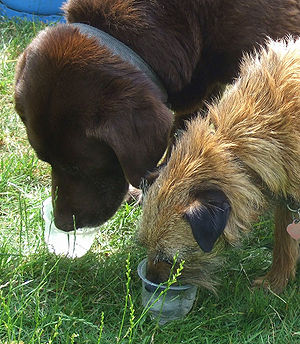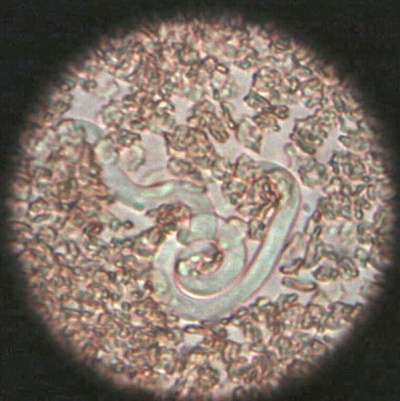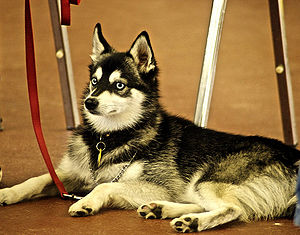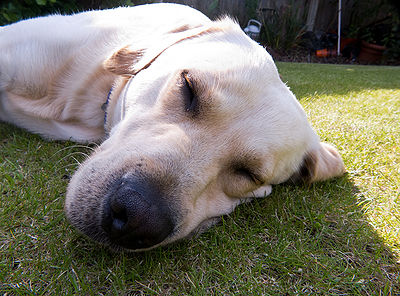
Excessive drinking in pets should not be taken lightly. Average intake of water for a 20lb. dog is about 3-4 cups. A 10lb. cat drinks about 2-4 oz. or 6 teaspoons per pound. Pets that eat only dry food may drink more. During the heat of summer, pets may drink more too. The larger the pet, the more s/he will drink.
Abnormal or excessive thirst is known as polydipsia. The thirstier a pet is, the more s/he will drink to excess. This often leads to polyuria, frequent and large amounts of urine excreted.
Excessive drinking usually indicates a more serious problem. Some diseases to be aware of are kidney failure, liver disease, diabetes mellitus (type 2 diabetes, slow onset), pyometra (uterine infection), high blood calcium, pituitary gland abnormalities, Cushing’s Disease (hyperthyroidism, adrenal glands malfunction causing kidney problems), nephrogenic (relating to the kidneys) diabetes insipidus (rare in cats, a condition preventing the body from retaining water which can lead to dehydration).
In order to measure the amount of water your pet is drinking, fill the pet’s bowl measuring the amount as you do so. At the end of 24 hours, measure the amount that’s left. This will give you a good idea of how much water your pet is drinking daily.
If you suspect your pet is drinking excessively, take him/her to the veterinarian for a checkup. Your vet will measure urine concentration, will palpate the abdomen to check liver and kidneys, check the thyroid gland. In females your vet will look for any vaginal discharge or abnormal odor or color. Your vet will ask you if there has been any weight loss, appetite change, accidents at home, etc. After further testing, your vet can determine what the problem is and advise necessary treatment.
Do not limit water intake until directed by your veterinarian.



